Abstract
In Japan’s aquaculture industry, production statistics for marine fisheries of mackerel, horse mackerel, Spanish mackerel, and sharks are an important source of information. The latest data for 2022 shows that cultivated mackerel production reached a maximum of 320kt. Past trends show that mackerel production has been consistently high, and they occupy an important position in Japan’s aquaculture industry. One reason for this may be that mackerel is popular with consumers and is used in a variety of dishes. On the other hand, production volumes of horse mackerel and sharks are stable, and these fish play an important role in Japan’s food culture. Although Spanish mackerel is produced in relatively low volumes, it is a high-quality fish and is in high demand. These statistics play an important role in understanding the growth and changes in Japan’s aquaculture industry and in promoting sustainable fisheries management. In the future, it is hoped that aquaculture will develop into more efficient and sustainable practices that can adapt to changing demand and environmental influences.
Mackerel fish production
Japan’s agricultural marine fisheries production statistics for mackerel include data from 1956 to 2022, with a peak of 1.63Mt recorded in 1978. However, current production is down to 19.7% of its peak. This trend is due to a variety of factors affecting mackerel catches. Possible reasons include overfishing, environmental changes, and stricter fishing regulations. Mackerel occupies an important position in Japan’s food culture, and a decline in its catch could have an impact on food security and the economy. Sustainable fisheries management and resource conservation are becoming increasingly important, and these efforts will influence future trends in mackerel production.
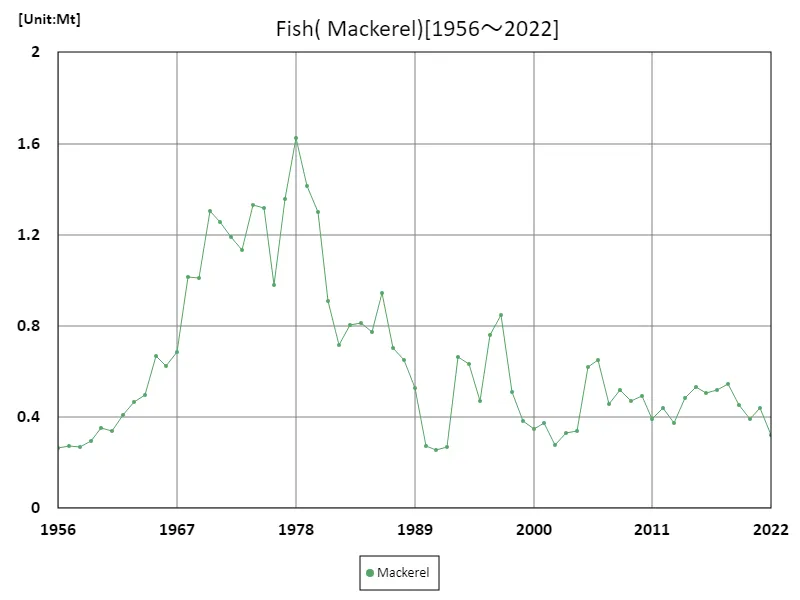

The maximum is 1.63Mt[1978] of Mackerel, and the current value is about 19.7%
Horse mackerel fish production
Statistics on horse mackerel production from marine fisheries in Japanese agriculture include data from 1956 to 2022. Among them, the highest production was recorded in 1960, with a subtotal of 596 kt. However, current production is down to 19.3% of its peak. This trend is due to several factors affecting horse mackerel catches. Possible reasons include overfishing, environmental changes, and stricter fishing regulations. Horse mackerel occupies an important place on the Japanese diet, and a decline in its catch could have implications for food security and the economy. Sustainable fisheries management and resource conservation are becoming increasingly important, and these efforts will influence future trends in horse mackerel production.
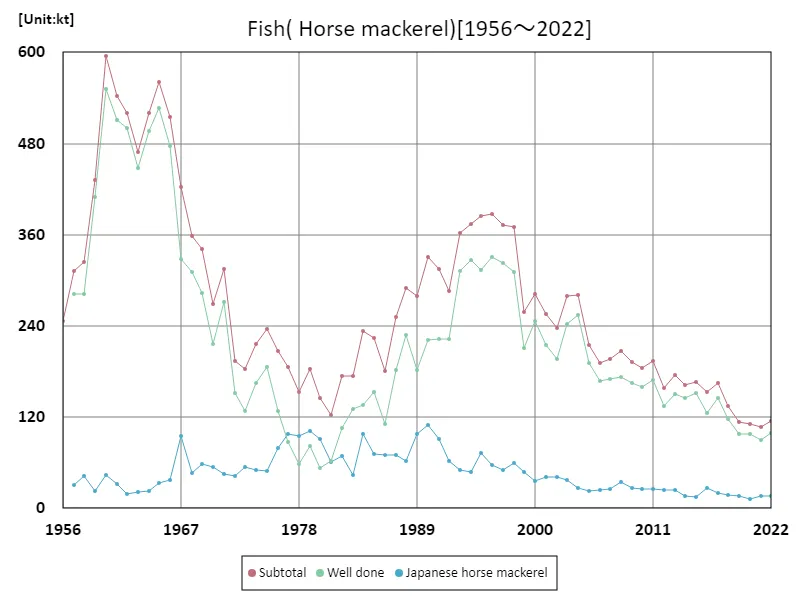

The maximum is 596kt[1960] of Subtotal, and the current value is about 19.3%
Spanish mackerel fisheries production statistics survey and production
The latest statistics on Spanish mackerel production in marine fisheries for Japan’s agriculture are from 1956, with the maximum overall being 40.5 kt, and the average and total also being 40.5 kt. This data shows that Spanish mackerel catches are relatively stable and have not fluctuated significantly. Generally, Spanish mackerel is known as a high-quality fish, and steady demand for it may be one of the reasons for this stability. Also, due to the small catches, they may be considered an important economic resource for smaller fishermen and regions. However, future Spanish mackerel catches may be affected by fisheries management and environmental changes, so sustainable fisheries management is necessary.
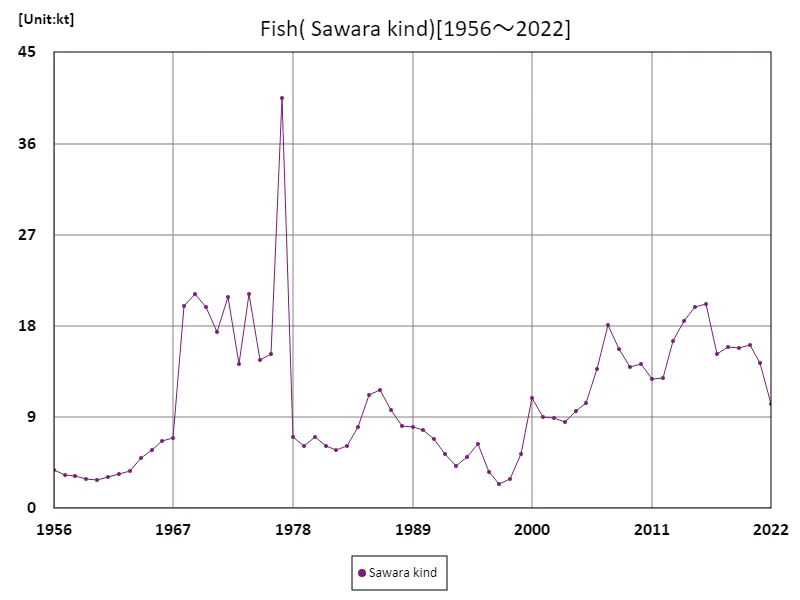

The maximum is 40.5kt[1977] of Sawara kind, and the current value is about 25.4%
Shark fisheries production statistics survey production
Fisheries production statistics for marine sharks in Japanese agriculture include data from 1956 to 2022. The highest production was recorded in 1957, with a catch of 76.1kt of sharks. However, current production has fallen to just 30% of its peak level. This trend is due to several factors affecting shark catches. Possible reasons include overfishing, environmental changes, and stricter fishing regulations. Shark is known as a luxury fish and while demand is stable, a decline in catches could have implications on food security and the economy. Sustainable fisheries management and resource conservation are becoming increasingly important, and these efforts will influence future trends in shark fisheries production.
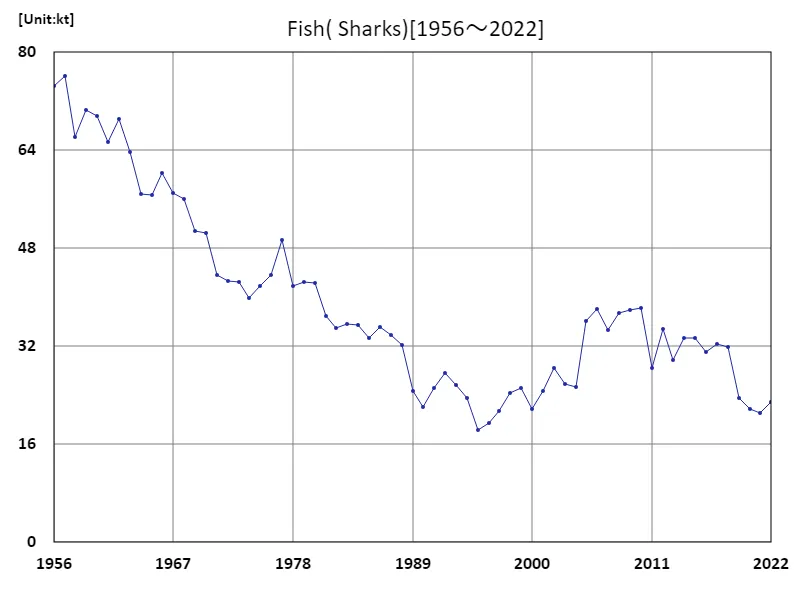

The maximum is 76.1kt[1957] of Sharks, and the current value is about 30%
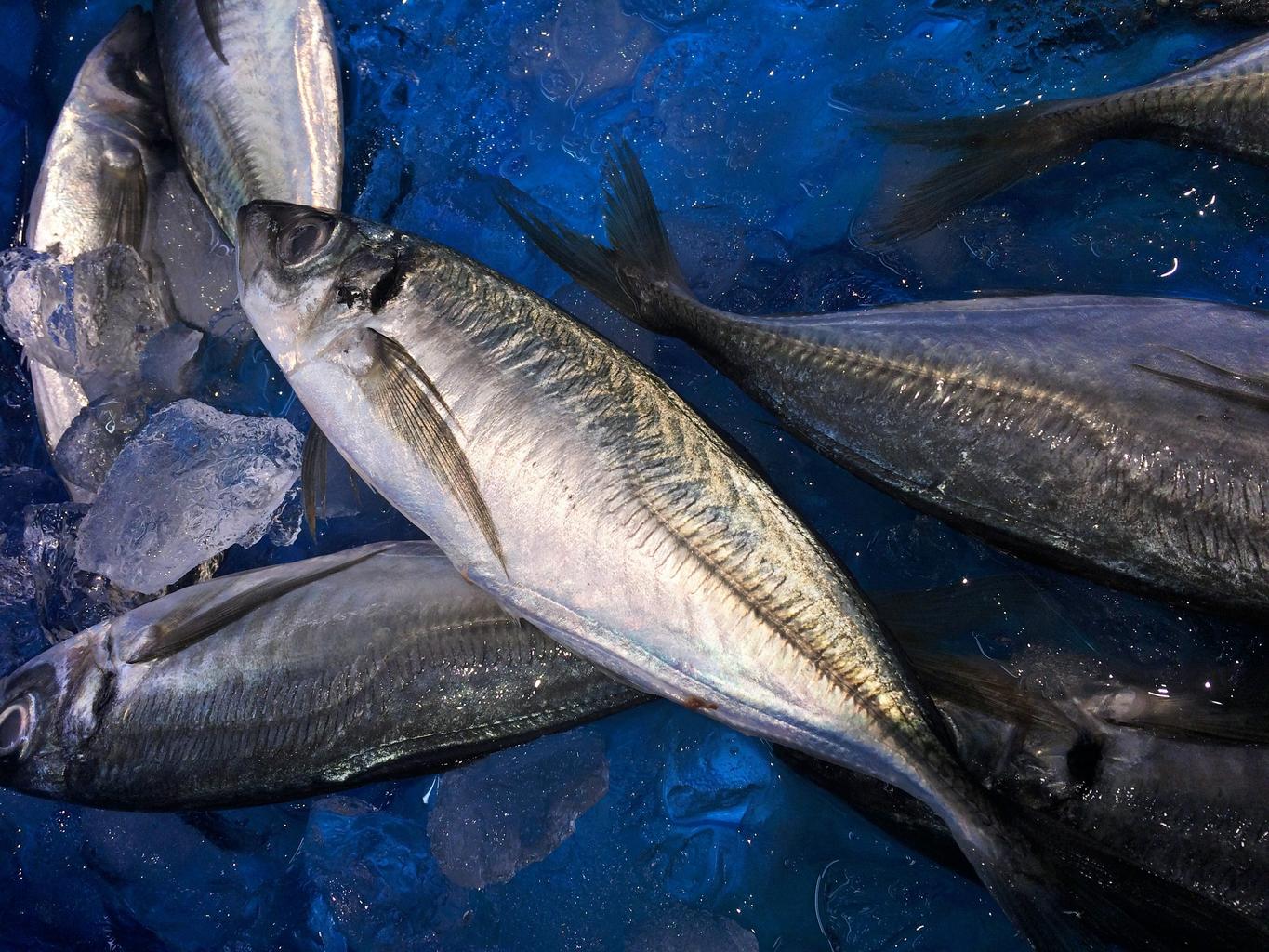


Comments